 |
Convert H263 to MP3
|
Total Audio MP3 Converter converts H263 to MP3. The software is an ALL-IN-ONE
audio converter that supports more than 150 audio and video files, and supports
batch conversion.
- Free Download Total Audio MP3 Converter
- Install the Program by Step-by-step Instructions
- Launch Total Audio MP3 Converter by Clicking Start -> All Programs
-> Total Audio MP3 Converter -> Total Audio MP3 Converter
- Choose H263 Files
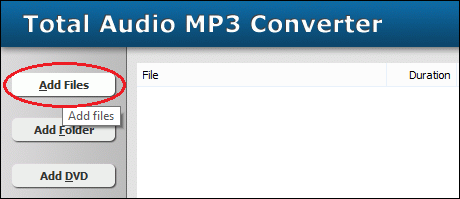
Click "Add Files" button to choose H263 files and add them
to conversion list.
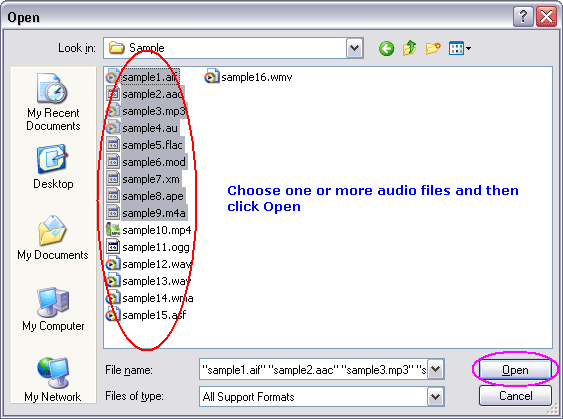
Choose one or more H263 files you want to convert and then click Open.
- Choose "to MP3"
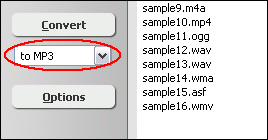
- Convert H263 to MP3
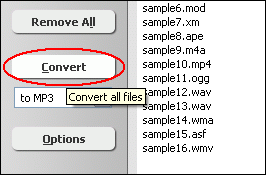
Click "Convert" to convert H263 files to MP3 format.
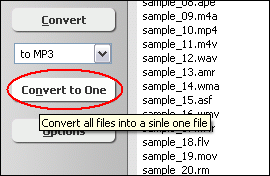
You can also click "Convert to One" to convert and combine/join/merge
all H263 files to one MP3.
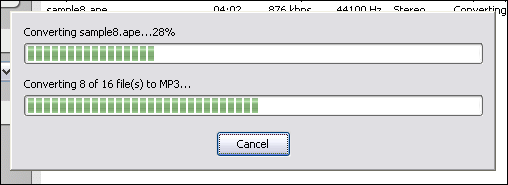
The software is converting H263 files to MP3 format.
- Play & Browse
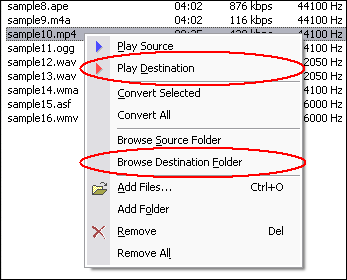
Right-click converted item and choose "Play Destination" to play
the destination file, choose "Browse Destination Folder" to open
Windows Explorer to browse the destination file.
- Done
Top
What is H263?
H.263 is a video codec standard originally designed as a low-bitrate compressed
format for videoconferencing. It was developed by the ITU-T Video Coding Experts
Group (VCEG) in a project ending in 1995/1996 as one member of the H.26x family
of video coding standards in the domain of the ITU-T.
H.263 has since found many applications on the internet: much Flash Video content
(as used on sites such as YouTube, Google Video, MySpace, etc.) is encoded in
this format, though many sites now use VP6 encoding, which is supported since
Flash 8. The original version of the RealVideo codec was based on H.263 up until
the release of RealVideo 8.
H.263 is a required video codec in ETSI 3GPP technical specifications for IP
Multimedia Subsystem (IMS), Multimedia Messaging Service (MMS) and Transparent
end-to-end Packet-switched Streaming Service (PSS). In 3GPP specifications is
H.263 video usually used in 3GP container format.
What is MP3?
MPEG-1 Audio Layer 3, more commonly referred to as MP3, is a digital audio encoding
format using a form of lossy data compression. It is a common audio format for
consumer audio storage, as well as a de facto standard encoding for the transfer
and playback of music on digital audio players. MP3's use of a lossy compression
algorithm is designed to greatly reduce the amount of data required to represent
the audio recording and still sound like a faithful reproduction of the original
uncompressed audio for most listeners, but is not considered high fidelity audio
by audiophiles. An MP3 file that is created using the mid-range bit rate setting
of 128 kbit/s will result in a file that is typically about 1/10th the size of
the CD file created from the original audio source. An MP3 file can also be constructed
at higher or lower bit rates, with higher or lower resulting quality. The compression
works by reducing accuracy of certain parts of sound that are deemed beyond the
auditory resolution ability of most people. This method is commonly referred to
as perceptual coding. It internally provides a representation of sound within
a short term time/frequency analysis window, by using psychoacoustic models to
discard or reduce precision of components less audible to human hearing, and recording
the remaining information in an efficient manner. This is relatively similar to
the principles used by JPEG, an image compression format.
H263 to MP3 Related Topics:
CDA to MP3,
CD to MP3,
FLAC to MP3,
IT to MP3,
M4A to MP3,
MO3 to MP3,
UMX to MP3,
WMA to MP3,
WV to MP3,
ALAC to MP3,
DAT to MP3,
DIF to MP3,
KAR to MP3,
M1A to MP3,
M1V to MP3,
M2A to MP3,
MTS to MP3,
NSA to MP3,
NSV to MP3,
NUT to MP3,
OGM to MP3,
RMVB to MP3,
SWF to MP3,
TS to MP3,
VCD to MP3,
WMD to MP3,
WM to MP3,
mp3PRO to MP3,
MPA to MP3,
MPEG to MP3,
Resample MP3,
VOB to MP3,
VOC to MP3
|







